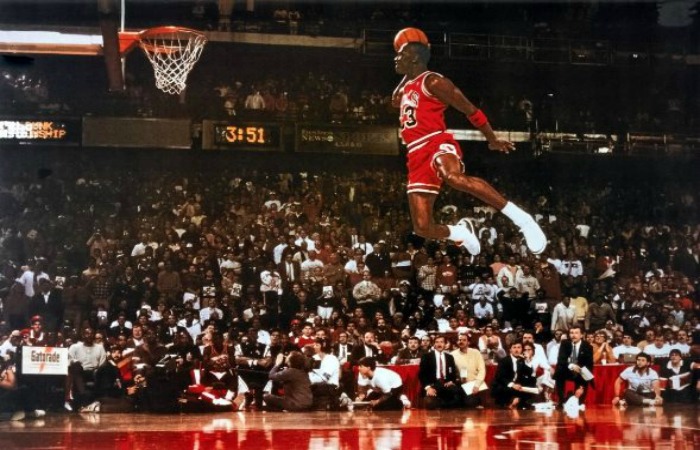The Challenge: Rejection hurts like hell.
The Science: To our brains, rejection feels just like physical pain.
The Solution: Here’s the key to bouncing back in the face of rejection.
Have you been shot down by your longtime crush? Perhaps you were informed you didn’t get that dream job? Maybe you were even told you couldn’t sit at the cool lunch table.
The popular adage states that there are only two things certain in life: death and taxes. I’d suggest adding a third one: rejection.
Rejection is like that whip and nae-nae song. We hear it way more than we would like and once it is in our heads, we think we will never be able to get it out.
Not only is rejection an emotional pain, but to our brain, it feels like a physical pain. fMRI studies have shown that when we experience rejection, the same areas of our brain become activated as when we experience physical injury.
Not only that but social pain has been shown to be more easily relieved than physical pain. So not only does rejection hurt like a black eye, but it makes us feel like we will get punched in the face any time we think back to that moment.
Luckily for us, there is a surefire way to bounce back from rejection. To find out how we need to look no further than the great Michael Jordan.
Even The Great Ones Get Rejected
The 1982 National Championship game between the North Carolina Tar Heels and the Georgetown Hoyas didn’t start the way “His Airness” would have liked.
Jordan was rejected on three of his first four field goal attempts. He couldn’t get a shot off without it being swatted by Georgetown’s center Patrick Ewing.
In the opening minutes of the game, Ewing blocked five shots. He swatted shot after shot, trying to send each one crashing into the rafters.
Before the game, Georgetown head coach John Thompson told Ewing, “Everything that comes to the rim, take it back, take it back” (ESPN’s Requiem For The Big East).
He was instructing his freshman center to reject every single North Carolina shot, even if it meant doing something illegal that would result in two free points for the opposing team.
He wanted Ewing to seem so imposing, so much larger than life that he was willing to sacrifice a few points on the scoreboard to gain a few points in the mental game.
Rejection Feels Like A Punch In The Face
Thompson later said that “kids don’t remember goaltending calls. They remember getting their shot blocked.”
Based on what we learned earlier, this makes a lot of sense. When we are rejected, our brain is impacted in a similar way as to a punch in the face. We don’t always remember the circumstances surrounding the rejection; we just remember the pain.
In the first half, North Carolina’s rejection was taking its toll. Georgetown led 32-31 at halftime, and the game’s announcers kept commenting on how intimidating Ewing appeared and how tentatively UNC was playing.
You have to wonder what was going on in Jordan’s mind at halftime. It was clear that Ewing was causing a lot of pain. And remember, this was the type of pain we remember vividly and frequently. It is not an overstatement to say the first half was a traumatic experience for the 18-year-old Jordan.
Our Response To Rejection Can Go One Of Two Ways
To start the second half, Jordan had two options. Option A, he could try to avoid reliving the rejection and stop shooting the ball. Option B, he could embrace the rejection and keep attacking the basket.
Jordan didn’t know it at the time, but option A was the path to stress, and choosing option B would lead to growth.
Research has shown that after a crisis, people who accept their situation for what it is are less likely to suffer from the effects of Post Traumatic Stress Disorder (PTSD). Being able to find something positive in the disaster leads to benefits that psychologists have called ‘Post Traumatic Growth.’
Often, we think that resilient people must experience very few negative emotions or feelings. We assume they display optimism 24/7. But being resilient has nothing to do with living a life free from rejection.
Everyone gets rejected and knocked down by life’s version of Patrick Ewing. People who are unable to pull themselves up off the ground slip into a cycle of “rumination” says Susan Nolen-Hoeksema, a psychologist at Yale. They focus on the rejection, which leads to a downward spiral of gloom that is very difficult to shake.
Those who embrace the rejection and move on avoid this spiral and experience growth.
Post-traumatic growth shows us that something positive can occur as a result of a struggle with a highly challenging situation. This growth is demonstrated by an increased appreciation for life or, as in Jordan’s case, an improved sense of personal strength.
The Great Ones Keep Shooting
With North Carolina trailing by one point and only a few seconds left in the game, the ball found its way into the hands of the freshman guard who was rejected three times in the first half.
What path would Jordan take? Option A or Option B…Relive and ruminate or embrace and endure?
Any basketball fan knows which option Michael Jordan chose. Staring rejection in the face, he pulled up and nailed a game-winning jump shot.
Throughout his Hall of Fame career, Jordan was quick to point to that moment as the launching pad of his success. He said numerous times that when confronted with game-winning shots while playing for the Chicago Bulls, he would think back to his shot in the 1982 National Championship game.
Sounds a lot like post-traumatic growth.
We all will frequently experience rejection in life. That rejection will hurt more than we want to admit. How we respond to that rejection will put us on either a path to stress or a path to growth.
Option A or Option B.
Which will you choose?


